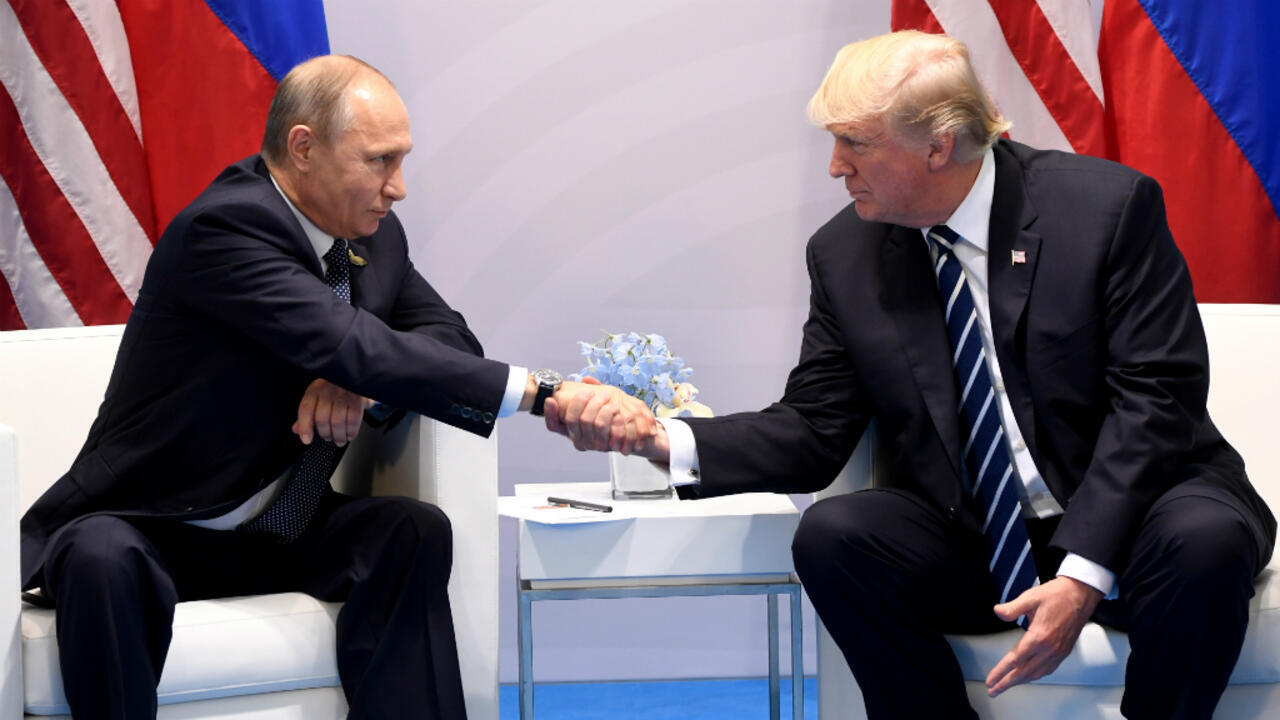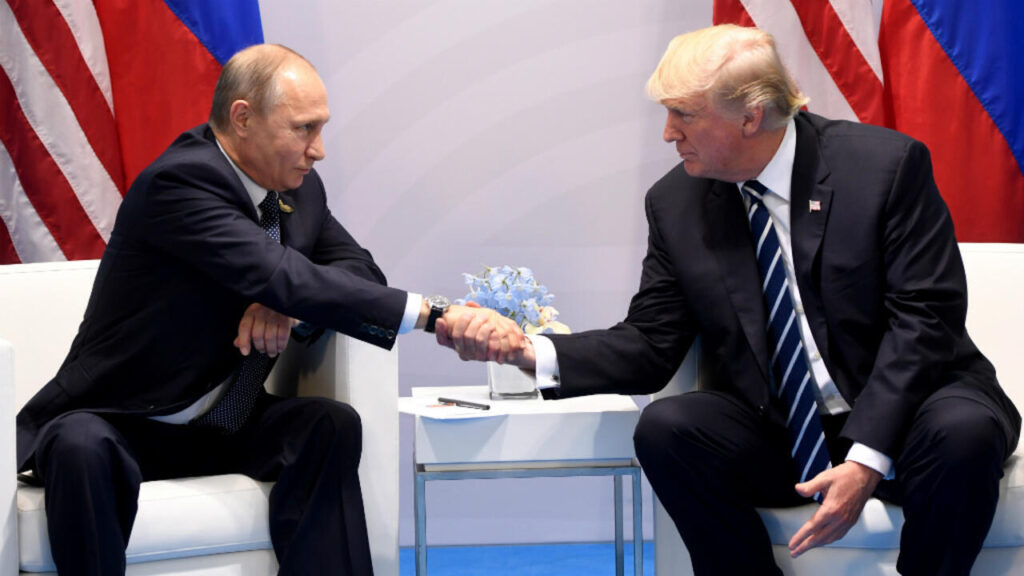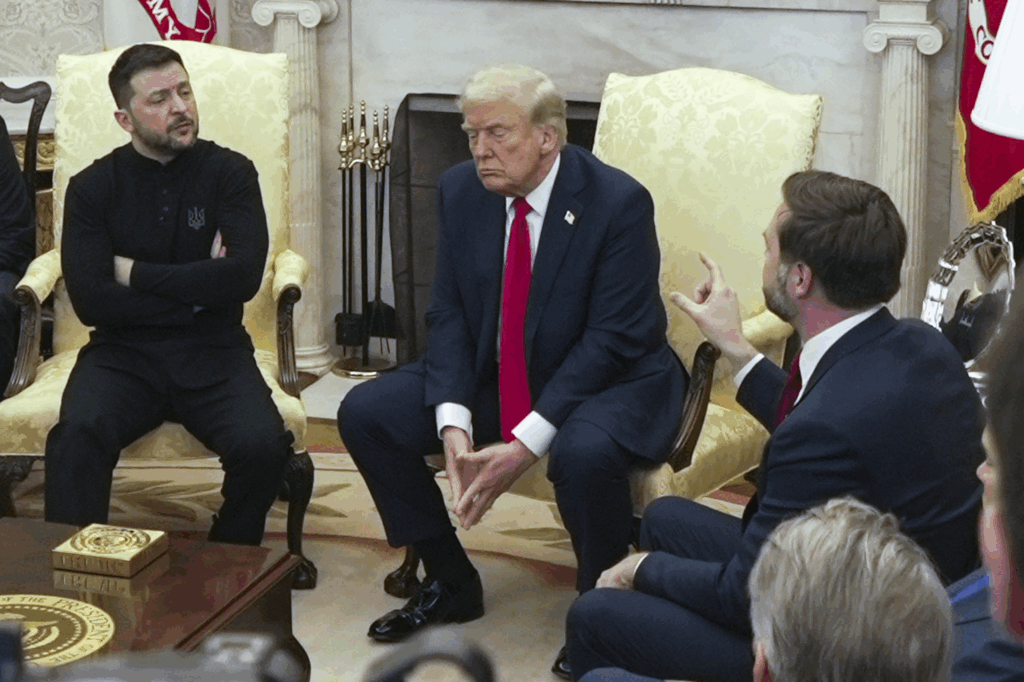What’s Next for Ukraine? Trump and Putin Discuss Ceasefire

What’s Next for Ukraine? Trump and Putin Discuss Ceasefire
In a high-stakes diplomatic engagement on May 20, 2025, U.S. President Donald Trump and Russian President Vladimir Putin held an extensive two-hour phone conversation. The call focused primarily on ending the Ukraine conflict and exploring future trade relations. Trump and Putin discuss ceasefire and while they didn’t reach an immediate ceasefire agreement, the discussion set the stage for direct negotiations between Russia and Ukraine. As a result, both hopes and concerns about the path to peace in Eastern Europe have emerged.
This marks Trump’s third official conversation with Putin since returning to office in January. Moreover, it highlights his administration’s ongoing efforts to broker an end to a war that has raged for over three years. The conflict has claimed hundreds of thousands of lives and completely reshaped European security dynamics.
Inside the Trump-Putin Conversation: Key Takeaways
The lengthy discussion between the two leaders covered significant ground. From immediate ceasefire prospects to potential economic cooperation once hostilities end, several important developments emerged from their talk.
Trump’s Push for Immediate Ceasefire Negotiations
President Trump announced after the call that “Russia and Ukraine will immediately start negotiations toward a Ceasefire and, more importantly, an END to the War.” Additionally, he described the conversation’s “tone and spirit” as “excellent.” This represents a shift from his earlier position, where he had threatened additional sanctions against Russia if Putin didn’t agree to an immediate 30-day ceasefire.
“I believe it went very well,” Trump told reporters, emphasizing his desire to end what he has repeatedly called a “bloodbath” in Ukraine. However, the U.S. president also indicated he would “just back away” if no progress materializes from these talks.
Putin’s Response and Conditions
Putin struck a more measured tone in his post-call remarks from Sochi. He thanked Trump for supporting the resumption of direct talks but stopped short of committing to an immediate ceasefire.
“We have agreed with the president of the United States that Russia will propose and is ready to work with the Ukrainian side on a memorandum on a possible future peace accord,” Putin stated.
The Russian leader emphasized that any agreement would need to define “the principles of settlement” and “the timing of a possible peace agreement.” Furthermore, he maintained his position that the “root causes” of the conflict must be addressed before hostilities can end.
Kremlin spokesman Dmitry Peskov later clarified the timeline expectations: “There are no deadlines, and there cannot be any” for the negotiations process.
Trade Discussions and Economic Incentives
A significant portion of the call focused on future economic relations. Trump highlighted potential trade opportunities as an incentive for ending the conflict.
“Russia wants to do largescale TRADE with the United States when this catastrophic ‘bloodbath’ is over, and I agree,” Trump wrote on his Truth Social platform.
The U.S. president emphasized that Russia has “tremendous opportunity” to “create massive amounts of jobs and wealth” through expanded trade relations with America. Similarly, he noted that “Ukraine can be a great beneficiary on Trade, in the process of rebuilding its Country.”
This economic focus aligns with Trump’s transactional approach to foreign policy. In this approach, commercial interests often take precedence over traditional diplomatic considerations.
Russian President Vladimir Putin speaks to journalists after his telephone conversation with US President Donald Trump [Vyacheslav Prokofyev/Pool/AFP]
Current State of the Russia-Ukraine Conflict
To understand the significance of the Trump-Putin call, we must examine the current military and territorial situation in Ukraine. This forms the backdrop for any potential peace negotiations.
Territorial Control and Military Situation
After more than three years of fighting, Russia currently controls approximately 19-20% of Ukrainian territory. This equals about 44,068 square miles—roughly the size of the U.S. state of Ohio, according to The Russia-Ukraine War Report Card. This includes Crimea, which Russia annexed in 2014, and substantial portions of eastern and southern Ukraine seized since the full-scale invasion began in February 2022.
Russian forces continue to make slow but steady gains along the 1,000-kilometer front line. In fact, they’ve captured an additional 120 square miles of Ukrainian territory in the past month alone, according to the Institute for the Study of War. Meanwhile, Ukrainian forces maintain a small foothold in Russia’s Kursk and Belgorod regions, controlling approximately 10 square miles of Russian territory.
The Human Cost of War
The human cost has been staggering. U.S. military estimates suggest Russia has suffered more than 790,000 military casualties (killed and wounded). Meanwhile, Ukrainian President Volodymyr Zelenskyy has acknowledged around 400,000 Ukrainian military casualties.
Thousands of civilians have also perished. Additionally, infrastructure damage across Ukraine is estimated in the hundreds of billions of dollars. The conflict has created Europe’s largest refugee crisis since World War II, with millions of Ukrainians displaced.
Recent Peace Efforts and Istanbul Talks
The Trump-Putin call follows the first direct talks between Russian and Ukrainian delegations since 2022, held in Istanbul on May 16, 2025. While these negotiations, facilitated by Turkey, yielded an agreement to exchange 1,000 prisoners of war from each side, they failed to produce a breakthrough on ceasefire terms.
During those talks, the Russian delegation reportedly insisted that Ukraine withdraw entirely from territories Russia claims to have annexed—a demand Kyiv immediately rejected. The negotiations lasted less than two hours, highlighting the significant gaps that remain between the warring parties’ positions.
Just days after these talks, Russia launched what Ukrainian authorities described as the largest drone attack of the war, killing at least 11 people. Many analysts interpreted this as Putin signaling his willingness to continue fighting despite diplomatic overtures.
Reactions from Ukraine and European Allies
The outcomes of the Trump-Putin call have elicited mixed responses from Ukraine and its European supporters. These reactions reflect ongoing concerns about Russia’s intentions and America’s commitment to Ukrainian sovereignty.
Zelenskyy’s Response to the Call
Ukrainian President Volodymyr Zelenskyy spoke with Trump twice on May 19. The first conversation occurred before the Putin call, and the second afterward in a group discussion that included European leaders.
Zelenskyy emphasized on social media that “Ukraine is ready for a full and unconditional ceasefire,” adding that “it is important not to dilute this proposal.”
In subsequent remarks to reporters in Kyiv, Zelenskyy expressed willingness to sign a memorandum with Russia that includes ceasefire provisions. However, he maintained that “Russia must end the war it started, and it can begin doing so any day.”
He also stressed that if Russia refuses a ceasefire, sanctions pressure should increase—a position that appears at odds with Trump’s current approach.
Ukraine’s Diplomatic Priorities
Zelenskyy called for continued U.S. engagement, stating it is crucial the U.S. “does not distance itself” from the talks. Furthermore, he suggested that negotiations could take place in Turkey, Switzerland, or potentially at the Vatican.
The Ukrainian president has consistently advocated for a peace that preserves Ukraine’s territorial integrity. Nevertheless, he has shown flexibility on the timeline for regaining control of all Ukrainian territory, including Crimea.
European Leaders Express Concern
European officials have privately expressed disappointment with Trump’s apparent retreat from demanding an immediate ceasefire.
“It is impossible to trust him for more than one day. He does not seem to be interested in Ukraine at all,” one European diplomat told Reuters, speaking anonymously.
German Defense Minister Boris Pistorius was more direct, stating publicly: “Putin is clearly playing for time. Unfortunately, we have to say Putin is not really interested in peace.”
Despite these concerns, European leaders are maintaining a united front with Ukraine. On May 20, the European Union announced its 17th package of sanctions against Russia. The United Kingdom followed with additional measures as well. Notably, the United States did not join these new sanctions efforts.
Trump announced ceasefire negotiations between Russia and Ukraine would begin “immediately” following his call with Putin [ABC News]
The Path Forward: Prospects for Peace
As Russia and Ukraine prepare for potential ceasefire negotiations, significant questions remain about the format, timeline, and likelihood of success for these diplomatic efforts.
Potential Venues for Negotiations
Several locations have emerged as possible venues for direct talks between Russian and Ukrainian officials. Pope Leo XIV has expressed readiness to host negotiations at the Vatican, an offer Trump mentioned favorably after his call with Putin.
Turkey, which facilitated the recent Istanbul meeting, remains another option. Switzerland, with its long tradition of diplomatic neutrality, is also under consideration.
Format and Structure of Talks
The format of these talks also remains uncertain. Putin spoke of working on a “memorandum” with Ukraine outlining principles for a future peace accord. Meanwhile, Zelenskyy has called for American and European representatives to be involved “at the appropriate level”.
Key issues that would need to be addressed include:
- Immediate ceasefire terms and verification mechanisms
- Status of territories currently under Russian control
- Security guarantees for Ukraine
- Future relationship between Ukraine and NATO
- Reconstruction funding and reparations
Trump’s Shifting Approach to the Conflict
Trump’s handling of the Ukraine crisis has evolved significantly since he took office in January 2025. Initially promising to end the war within 24 hours, he later threatened Russia with additional sanctions if Putin didn’t agree to a ceasefire.
Now, he appears to be stepping back, suggesting that Russia and Ukraine should negotiate directly. Meanwhile, the U.S. would focus on potential post-war economic relations.
This shifting approach reflects what some analysts describe as Trump’s “transactional” view of foreign policy. It centers around three goals: enhancing U.S. trade, promoting “great-power politics,” and achieving peace at almost any price to facilitate the first two objectives.
“Unless U.S. interests are at stake, I don’t think that he’s going to come back,” said Marina Miron, a researcher at King’s College London, in an interview with Al Jazeera. “They have other things to resolve.”
US-Russia Trade Relations: Present and Future
The economic dimension of the Trump-Putin call has drawn significant attention. This is particularly true given the dramatic decline in bilateral trade since Russia’s invasion of Ukraine and subsequent Western sanctions.
Current Trade Status and Sanctions Impact
U.S.-Russia trade has collapsed in recent years, falling from approximately $36 billion in 2021 to just $3.5 billion in 2024, according to Forbes. According to U.S. Census Bureau data, in the first quarter of 2025, the United States exported only $134.7 million in goods to Russia while importing $1.06 billion. This resulted in a trade deficit of $924.5 million.
This dramatic reduction stems from extensive sanctions imposed by the United States and its allies following Russia’s 2022 invasion. These measures have targeted Russia’s energy, banking, defense, and technology sectors. As a result, Russia’s access to global markets and financial systems has been significantly restricted.
Sanctions Effectiveness and Economic Impact
Western sanctions have had mixed effects on the Russian economy. While Russia has avoided economic collapse, its growth has slowed significantly. Additionally, it has become increasingly dependent on China as a trading partner.
Key sectors of the Russian economy, particularly high-tech industries, have suffered from lack of access to Western components and expertise. However, Russia’s energy exports have continued to find markets in Asia, helping to sustain government revenues.
Potential for Economic Cooperation
Despite current restrictions, Trump has signaled his interest in reviving economic ties with Russia once the Ukraine conflict ends. Putin has reciprocated this interest, reportedly offering access to rare earth minerals—including from Ukrainian territories occupied by Russia—during a February television interview.
However, experts caution that restoring trade relations won’t be simple. Many U.S. sanctions are congressionally mandated and would require legislative action to remove. Additionally, American companies—particularly banks—remain highly reluctant to operate in previously sanctioned markets due to compliance concerns and reputational risks.
“This is not the commodity-fueled, early 2000s Russian economy,” noted one analysis in Foreign Policy magazine. “Ask Iran just how quickly business-as-usual snaps back once the executive order is signed.”
Areas for Potential Trade Growth
If sanctions were eventually lifted, several sectors could see renewed U.S.-Russia trade activity:
- Energy, particularly oil and natural gas
- Agricultural products and fertilizers
- Minerals and raw materials
- Limited technology transfers
- Aviation and aerospace components
Nevertheless, the deep political divisions in Washington regarding Russia policy suggest that any significant trade normalization would face substantial domestic opposition in the United States.
Analysis and Outlook: Uncertain Path to Peace
The Trump-Putin call represents both an opportunity and a challenge for efforts to end Europe’s deadliest conflict since World War II. While the agreement to begin ceasefire negotiations marks a potential diplomatic opening, significant obstacles remain.
Battlefield Realities Shape Diplomacy
Russia continues to advance slowly on the battlefield while showing little urgency at the negotiating table. Putin’s insistence on addressing “root causes”—widely understood to include demands that Ukraine renounce NATO aspirations and recognize Russian territorial claims—remains fundamentally at odds with Ukraine’s position.
Military analysts suggest Russia believes time is on its side. “In a year, Ukraine can find itself in a less favorable negotiating position,” noted Ivan Timofeev, head of the Russian International Affairs Council, in comments to NPR, pointing to Russia’s slow but steady territorial gains.
U.S. Role and European Concerns
Meanwhile, Trump’s apparent willingness to let Russia and Ukraine negotiate directly, without the leverage of threatened U.S. sanctions, has alarmed Kyiv and its European supporters. As one European diplomat told Reuters, the outcome of the call was “one step forward, two or 10 steps back.”
For Ukraine, maintaining U.S. support remains crucial. America has been the largest contributor of military aid, and questions about future assistance once current funding expires this summer loom large over any peace process.
The Road Ahead
As negotiations potentially begin, the world watches to see whether Trump’s economic incentives and diplomatic engagement can overcome Putin’s territorial ambitions and Zelenskyy’s determination to preserve Ukrainian sovereignty.
The path to peace remains fraught with challenges. However, for the first time in months, a diplomatic door appears to have opened—however slightly. Whether this opening leads to a genuine ceasefire or merely provides Russia with time to consolidate its gains remains to be seen.
In the coming weeks, the seriousness of both sides’ commitment to negotiations will become clearer. Until then, the fighting continues, and the people of Ukraine remain caught in a devastating conflict with no immediate end in sight.



